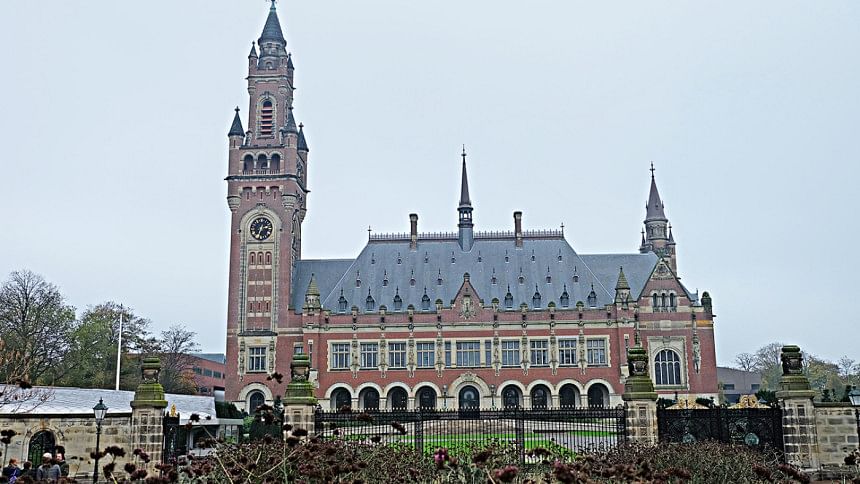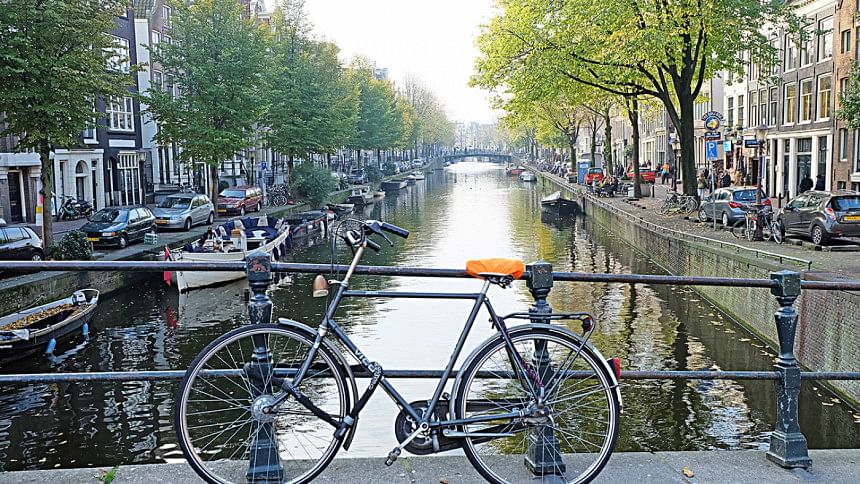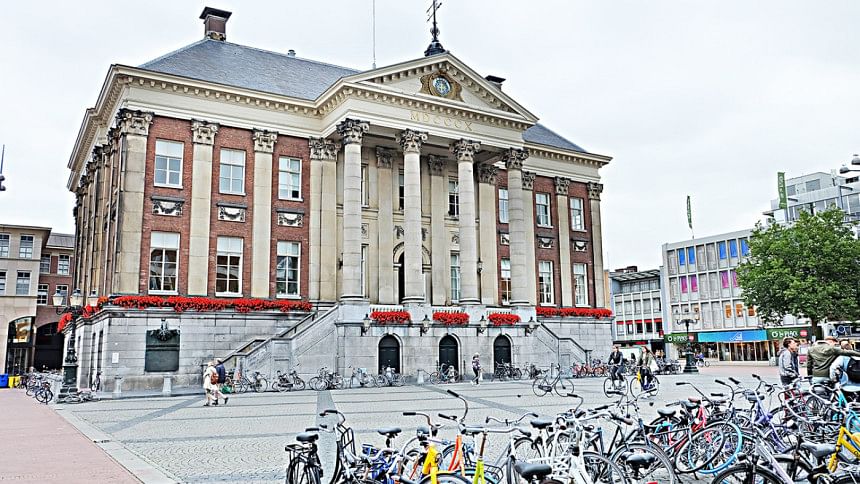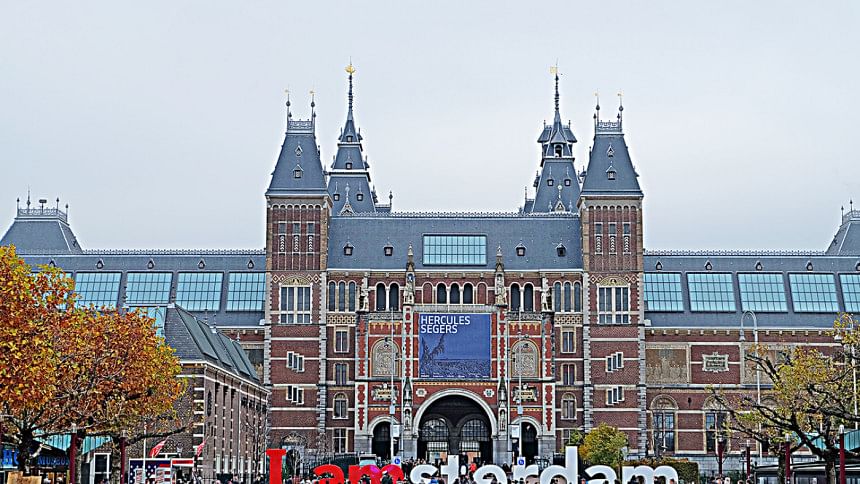Amazing Amsterdam, The Hague, and Groningen

We landed on a chilly winter evening at Schipol International Airport, Amsterdam — one of the busiest airports in Europe. The airport formalities were pleasantly efficient and we passed through easily. A mere 20-minute drive brought us to our hotel in the famous Museum District i n the city.
Amsterdam is the most vibrant and thriving city of the Kingdom of the Netherlands. Being the financial and business capital of the country, the city is the world's oldest stock exchange and one of Europe's largest bourses.
The city is also the cultural capital of the Netherlands. Its status as the Dutch capital is mandated by the Constitution of the Netherlands, although it is not the seat of the Dutch government, which is at The Hague.

CITY FULL OF MUSEUMS
The most important museums of Amsterdam are located on the Museumplein (Museum Square). The Square is bordered by the very large Rijksmuseum, the Van Gogh Museum, and the Stedelijk Museum.
The Van Gogh Museum houses some 200 paintings and 550 sketches showing Van Gogh in all his moods. The art collection is the biggest of its kind in the world, and combined with hundreds of letters by Van Gogh, and selected works by his friends and contemporaries, form the core of the collection. The museum is indeed a shrine dedicated to the works of Van Gogh.
Our next visit was to The Rijksmuseum — the largest and most attractive museum in the Netherlands. This colossal building possesses the largest and most important collection of classical Dutch art. It consists of nearly one million objects. The artist most associated with Amsterdam is Rembrandt, whose work, and the work of his pupils, is displayed. We were awed by Rembrandt's masterpiece De Nachtwacht, or The Night Watch, one of the top pieces in art history.
Next to the Van Gogh museum stands the Stedelijk Museum. This is Netherland's most important museum for modern and contemporary art. A marvellous showroom indeed!
We also found time to visit Ripley's Believe It or Not Museum at the famous Dam Square. With over 500 genuine bizarre artefacts displayed in five floors, this is one of the most amazing, entertaining, and fascinating museums I have ever come across.
Amsterdam is colloquially known as the 'Venice of the North' because of its lovely canals that criss-cross the city, its impressive architecture and hundreds of bridges. The canal sides are picturesque, with parks dotted with sculptures, and the entire ambience laid back and relaxed.

The Jordaan is a vibrant neighbourhood, with loads of shops, galleries and great views of the canals to explore. It is still a posh neighbourhood, with many Dutch celebrities owning property there. Among the attractions in this area is the Anne Frank House.
The Anne Frank House is the hiding place where Anne Frank wrote her famous diary during World War II. We also visited the Anne Frank House's permanent exhibition. We became very emotional as we recollected similar nights in hiding during the days of the 1971 War of Independence. Similar initiatives should be undertaken by us to disseminate such stories encountered by countless unsung heroes.
The old city centre is formed from canal rings. We took a canal cruise by boarding one of the boats near the Anne Frank House. A UNESCO World Heritage Site, the Amsterdam Canal Ring was dug in the 17th century to attract wealthy home owners. During the canal cruise, we came across the Maritime Museum and the famous EYE Film Institute.

We disembarked from the canal cruise at Rembrandtplein, the city's prime nightlife spots, and visited the Rembrandt House Museum, a historic house and art museum. Painter Rembrandt lived and worked in this house, and the collection contains Rembrandt's etchings and paintings of his contemporaries.
Cycling is a popular mode of transport in the Netherlands. Almost as many kilometres are covered by bicycle as by train. The Dutch are estimated to have at least 18 million bicycles, which makes more than one per capita. The city is very, very bike-friendly, and there are separate bike lanes on most major streets. Modern architecture is however under-represented in Amsterdam. Most of the buildings are quaint and are of gothic architecture.
During the weekend, we drove to Hague — seat of the country's government and home to the Royal Family. The Hague has been the living and working residence of the House of Orange for four centuries. The King's working palace, Palace Noordeinde, is modestly surrounded by the loveliest boutiques and gracefully landscaped garden.
Next in our list was the famous Peace Palace, an imposing brick building, home to the International Court of Justice and the Permanent Court of Arbitration. We also spent some time at Scheveningen — with its broad sandy beach and seafront promenade, it is ideal for holidaymakers seeking sun, sea, and sand.
The Central Station at the Amsterdam Centrum is the city's most renowned and popular transport hub. We boarded train for Groningen, the fourth largest city of the Netherlands in the north. The train journey took about three hours.
Groningen is a calm, quaint academic city; housing the University of Groningen and the Hanze University of Applied Sciences. The main square, Grote Market, with kiosks serving freshly fried fish, was delightful. Nearby, is the St. Martin's Tower, the highest church steeple in the city, that provides a wonderful view of the city. The botanical garden at Haren and the local museum was also worth visiting. The city, encircled by canals with a number of open spaces and parks, is a haven for cyclists.
We enjoyed lunch at a Surinamese restaurant with chicken curry and fish fry. The Surinamese, like the Indonesians, have a significant presence because of historical links.
Photo: Dr Shamim Ahmed

 For all latest news, follow The Daily Star's Google News channel.
For all latest news, follow The Daily Star's Google News channel. 



Comments